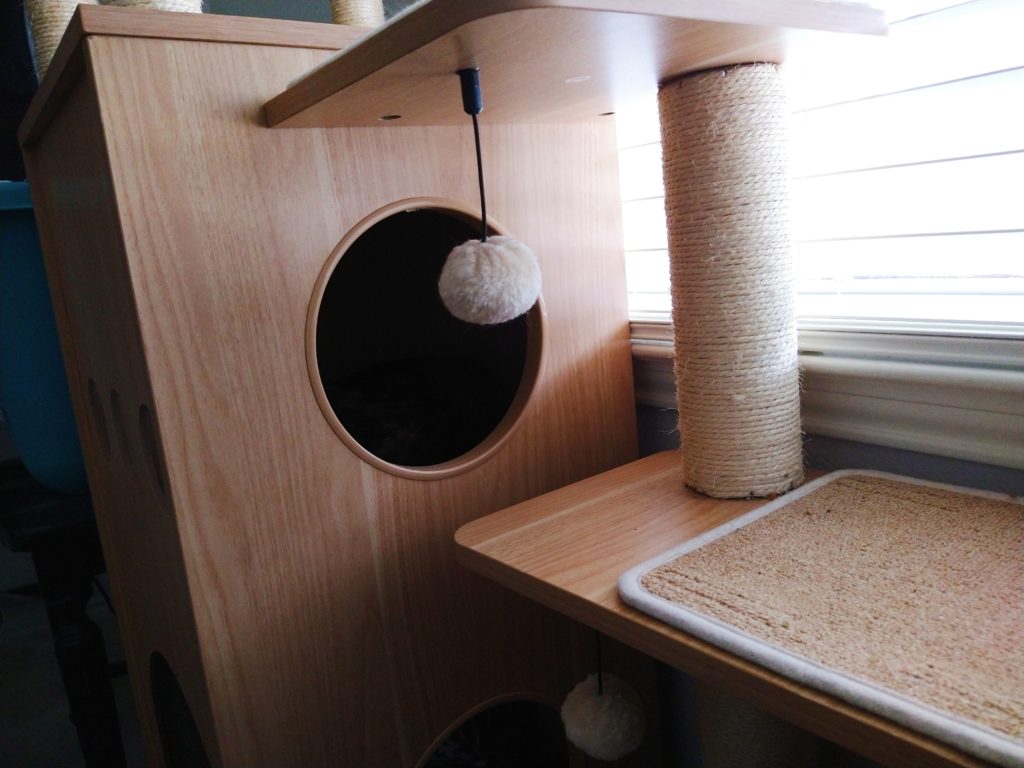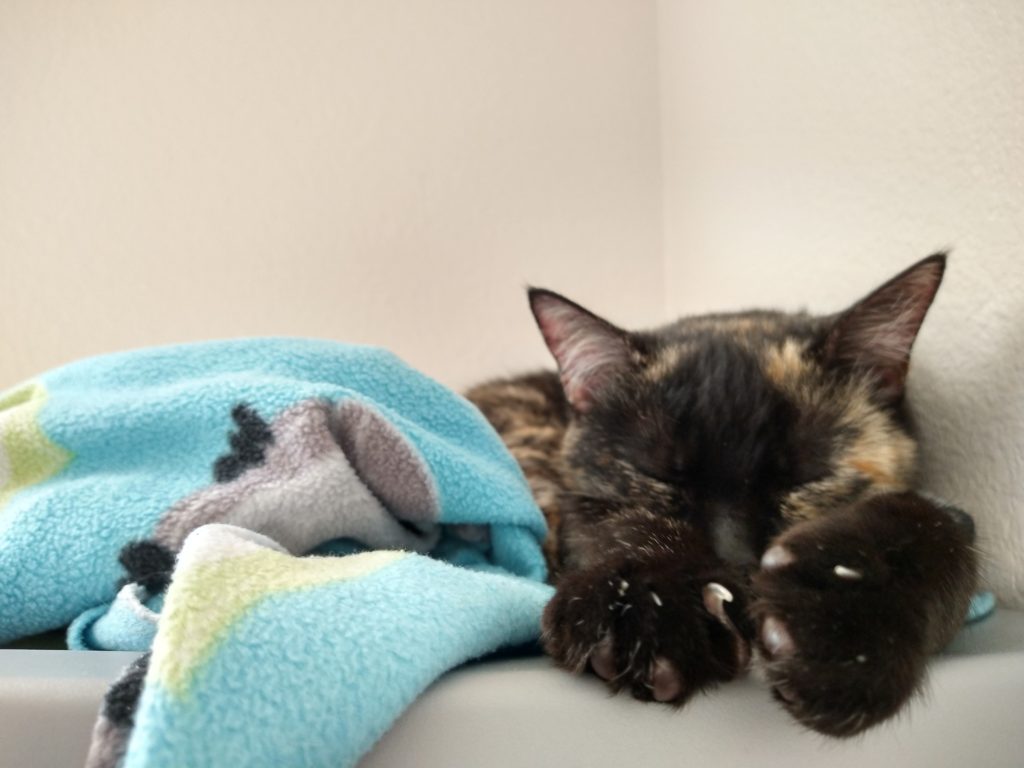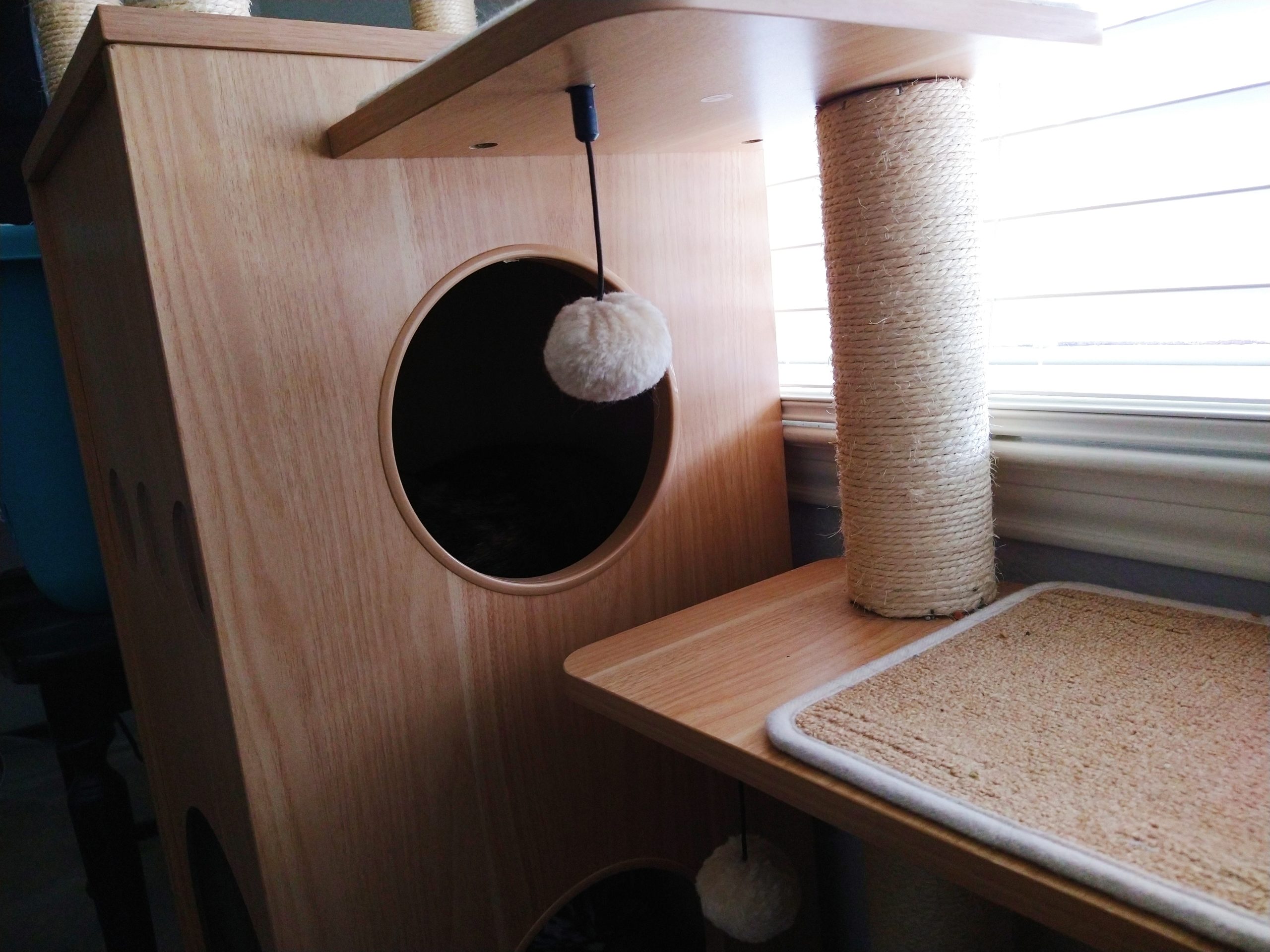Tips to Keep Cats From Scratching Furniture
Scratching is a natural instinct for cats, but can damage your furniture and floors.
Follow these tips to redirect your cat’s scratching to appropriate surfaces if you care about keeping everything looking brand new.
1. Provide Scratching Posts

The best way to prevent your cats from destroying your furniture is by providing them with plenty of scratching posts so they have their own scratching materials.
Place scratching posts or mats near the furniture where your cats like scratching. You can make the posts more appealing with loose catnip or catnip spray, plus toys.
Cats enjoy different types of scratching materials on different occasions, so provide them with plenty of options:
- Cardboard: Most cardboard scratching posts are recyclable, and you can flip it over to the other side for use
- Carpet: Messier, since fibers come apart
- Sisal (rope): Lasts longer and usually easier to repair
If you see your cat scratching the furniture, pick them up kindly and place them on or near the closest designated scratching area. Eventually, you will be able to meet their eyes and they will know to go to their scratching posts.
2. Trim Claws Regularly
Blunt cat nails do less damage than sharp ones. Strictly indoor cats need their claws trimmed more often, about every 2-3 weeks.
Your cat’s veterinarian will trim their claws for a small fee [usually] if you struggle to do so yourself. Some bigger cities may have cat grooming services wherein someone comes to your house to trim your cat’s nails.

Vetco by Petco can do this for $15-20 via the vet’s office. Petco does not usually have cat groomers, so the grooming department is not who you should call (but you may be redirected there if you call Petco and they don’t realize what you’re talking about!).
Otherwise, wrapping your cat in a Feliway-sprayed blanket, towel or shirt and scruffing their necks while someone else in your life trims their claws is another way to do it. If the cat is prone to biting you, position the fabric as a shield (but not in a way that they will choke on it if they do bite it).
3. Use Deterrent Sprays
Cat pheromone sprays, like Feliway, can help cats feel calm and not want to scratch the furniture.
Citrus or pepper sprays are known to deter cats, but they’re also NOT cat-safe.
Never spray a cat with anything that’s not vet-approved. Even spraying cats with water encourages aggression, because it conditions them to fear you.
4. Apply Double-Sided Tape
Cats don’t like tape…at all. You can apply double-sided tape to furniture corners and edges. Some companies sell big sheets of double-sided tape specifically for this reason.
The caveat, however, is that tape will ruin your furniture as well.
5. Consider Soft Paws/Nail Caps
Nail caps are applied to tail tips with adhesive. They are not considered “animal cruelty”, but they are also not a do-it-and-forget-it solution:
- Cat claws still need trimming
- You will have to do it again in 4-6 weeks
- Nail caps aren’t safe for cats who spent any time outside
If your cat’s claws grow so quickly they curl into her paw pads within two or three weeks, then nail caps might not be a good solution for you.
6. Reward Desired Scratching
When you see your cat using their scratching posts, reward them with praise and affection. Cats respond well to their owners using “baby talk” to address them, due to the higher frequency.
Examples of what to say:
- “Such a good scratcher.”
- “So scritchy-scratchy.”
- “Ohh, feels so nice.”
- “Who’s a precious kitty? You are. Yes, you are.”
Cats have the mentality of toddlers, specifically 2-3-year-olds. They are literally babies.
7. Remove Temptations
Stop making your furniture so tempting.
Always clean cat toys off of furniture, and never put their catnip onto your furniture. Block access to the undersides of your furniture.
If you have a table or any surface behind your couch, add a scratching mat there so your cat will feel more compelled to scratch the post instead.
Be patient and consistent in teaching your cat to scratch their posts instead of your furniture and carpet. Inconsistence and impatience will only stress your cat out more; cats don’t respond well to things they fear — you will wind up encouraging them to scratch the furniture, or even you, instead or deterring them.
Kittens learn faster in pairs, even though they’re capable of doing twice the damage. Adult cats may take longer to learn, and senior cats may struggle to learn since they can develop dementia.
